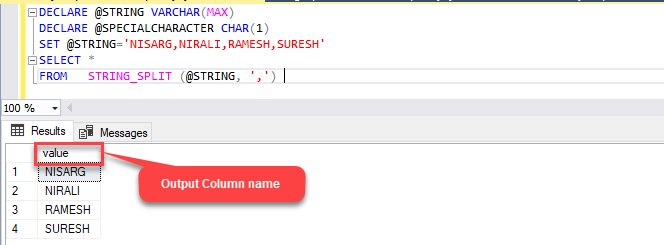

Here are the most used symbols for this mask: symbol
Sql server convert string to double plus#
The last symbol, ‘S’, specifies the use of a plus or minus sign (our number is negative, so it gets a minus). After the decimal symbol comes ‘99’, or two fractional digits. The ‘D’ symbol specifies a decimal marker (here, a point/dot ‘.’). Next, ‘999’ indicates three more digits (800).


The ‘9’ indicates one digit (in our example, 5) and ‘G’ represents a group of digits (in our example, one space indicates a group of thousands). In this example, this mask contains the symbol ‘FM’, which removes leading and trailing spaces. The format string describes the string containing the number (input value as string). This function takes two arguments: the string to convert and the format mask that indicates how each character in the string should be interpreted. Use the TO_NUMBER() function if you need to convert more complicated strings. SELECT CAST(qty AS VARCHAR) AS Expr1 FROM MutationItem mi with no luck. SELECT CAST(qty AS VARCHAR(10)) AS Expr1 FROM MutationItem mi and. SELECT CONVERT(VARCHAR(10), mi.qty) FROM MutationItem mi and. Learn the syntax of the cast function of the SQL language in Databricks SQL and. The PostgreSQL database provides one more way to convert. How do we concat a string and an integer in SQL Server CE FYI, I am using Vb.Net and Visual Studio 2010 Query Builder. Notice that CAST(), like the :: operator, removes additional spaces at the beginning and end of the string before converting it to a number. You can also use the standard SQL operator, CAST(), instead of the :: operator. This operator is used to convert between different data types.

In our example, we converted the string ‘ 5800.79 ’ to 5800.79 (a DECIMAL value). Use the :: operator to convert strings containing numeric values to the DECIMAL data type. Here’s the query you’d write:Īs you notice, the leading and trailing spaces were removed. Let’s convert the value in a string to a DECIMAL datatype.
Sql server convert string to double free#
This function is available in the Free version, and works in every version of SQL Server starting with SQL Server 2005: SELECT SQL#.String_TryParseToDecimal('7.You’d like to convert a string to a decimal value in PostgreSQL. And, there is a pre-done function that does this in the SQL# library (that I wrote) named String_TryParseToDecimal. I was hoping to find something more elegant than two REPLACE calls, but so far no such luck.Īlso, just to mention, while not a pure T-SQL solution, this can also be accomplished via SQLCLR. The FORMAT function, but the input type must be a numeric or date/time/datetime value (that and it was introduced in SQL Server 2012, so not applicable to SQL Server 2008 R2 or older).Īnd nothing else seemed to work. SQL Server data type Long, Integer, Byte, Boolean, Object: int: Double, Single: float: Currency: money: Date: datetime: String with 4000 characters or less: varchar/nvarchar: String with more than 4000 characters: text/ntext: One-dimensional Byte() array with 8000 bytes or less: varbinary: One-dimensional Byte() array with more than 8000 bytes. Looking at various format styles for CONVERT, but nothing applies here. Then convert the comma into a period / decimal and you are done: SELECT CONVERT(NUMERIC(10, 2),įor the sake of completeness, I should mention that I also tried: You don't need (or want) the thousands' separator when converting to NUMERIC, regardless if it is comma, period, or space, so just get rid of them first. The approach outlined in my answer below is only required if you are using SQL Server 2008 R2 or older.) ( If you are using SQL Server 2012 or newer, please see answer for a cleaner approach.


 0 kommentar(er)
0 kommentar(er)
